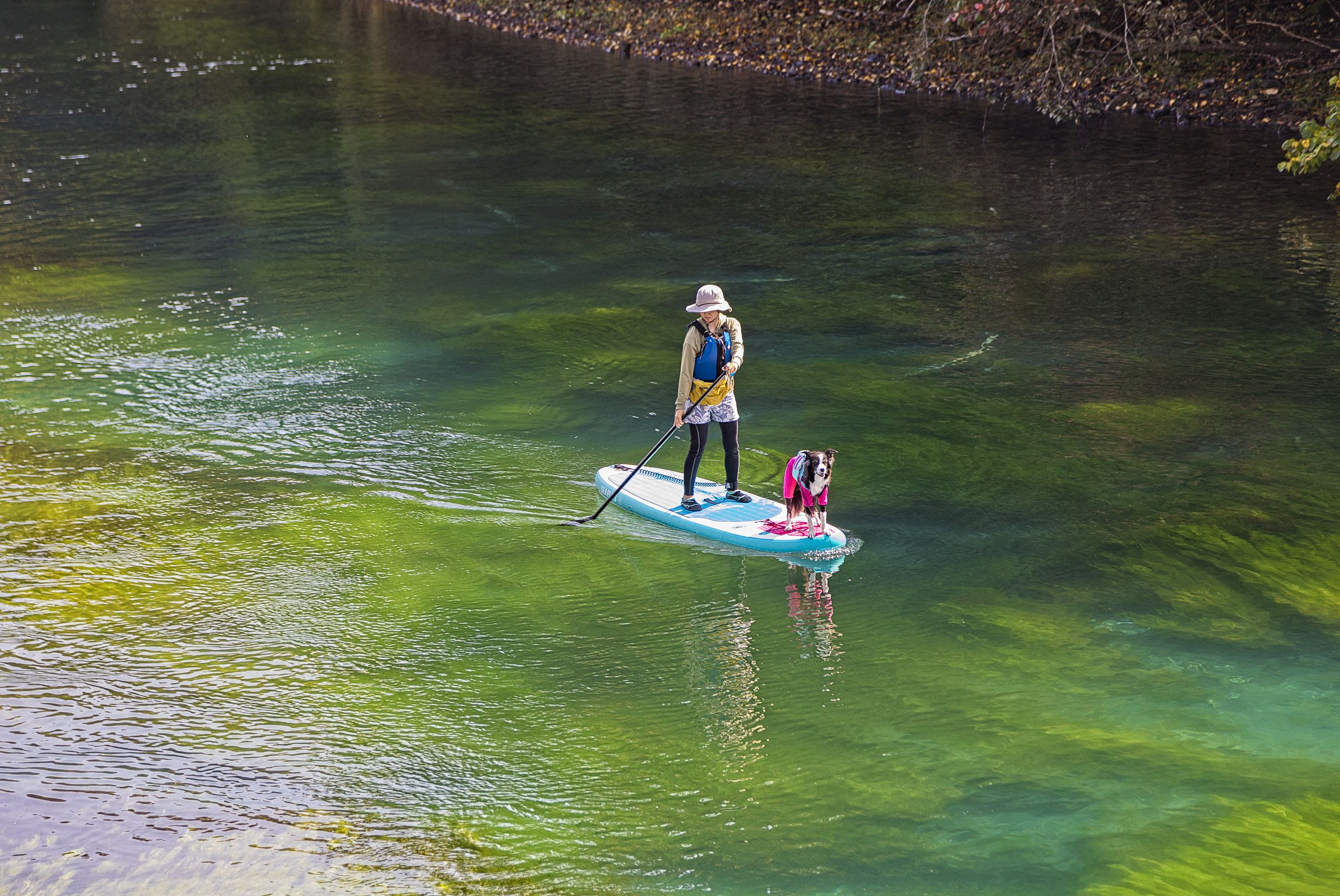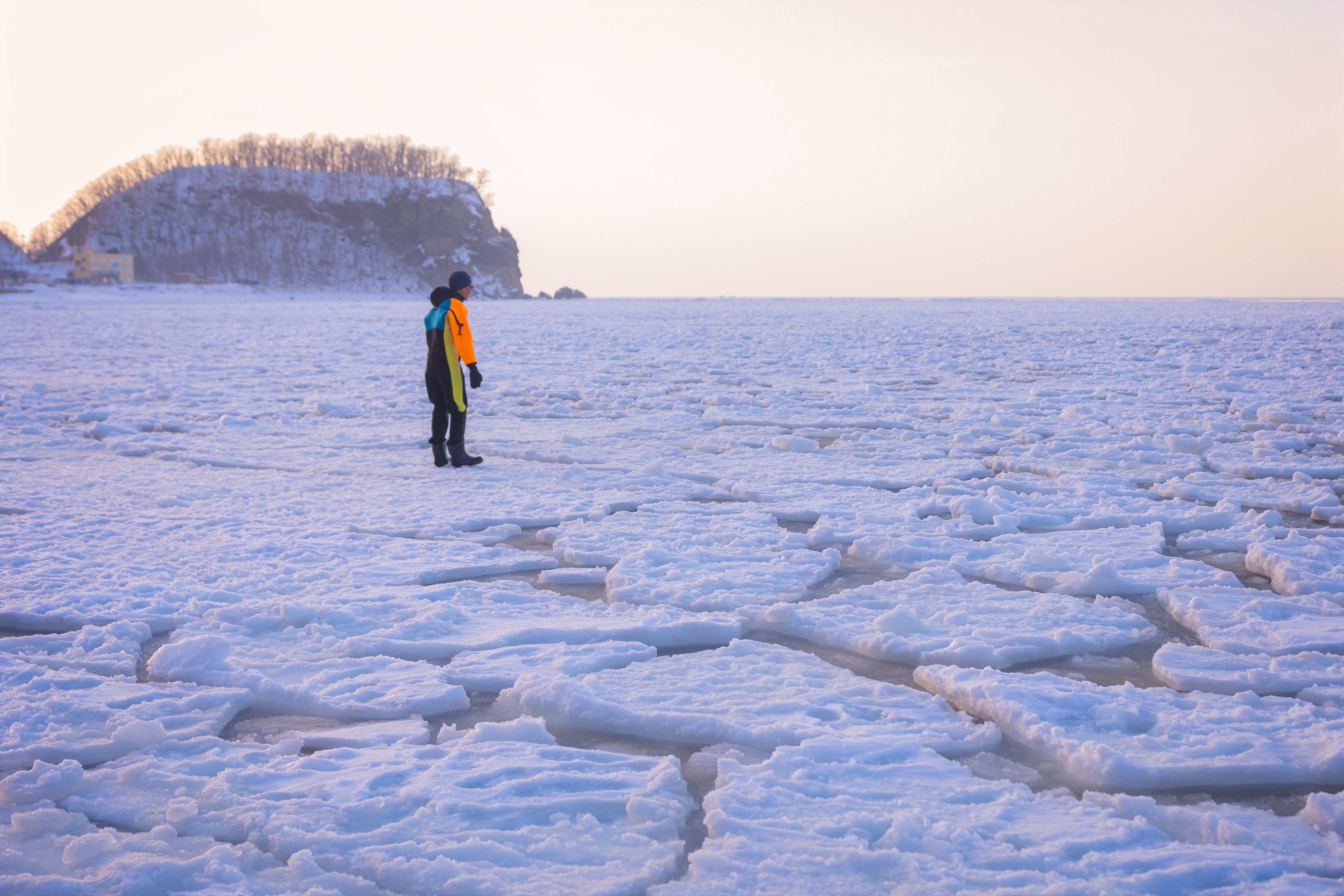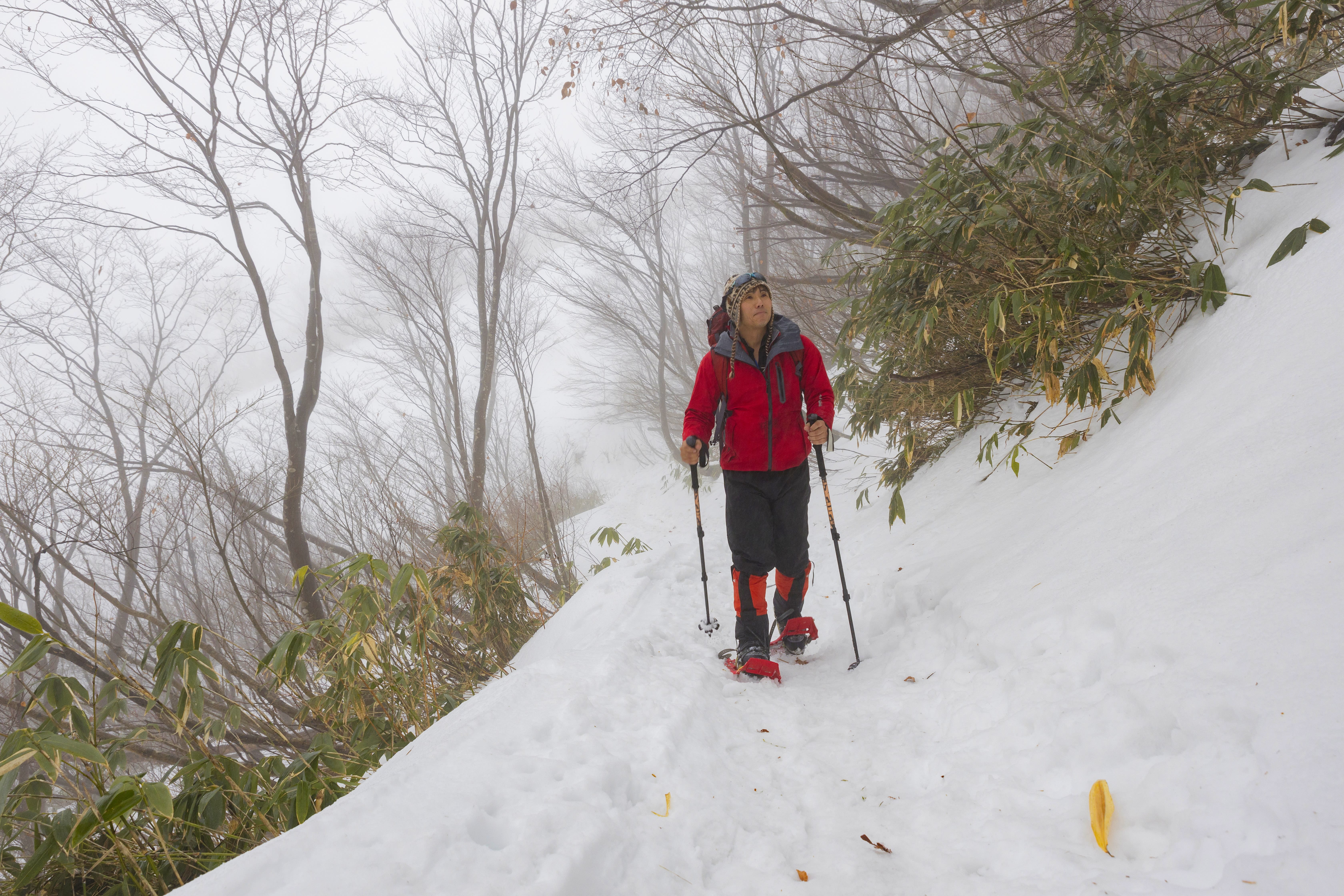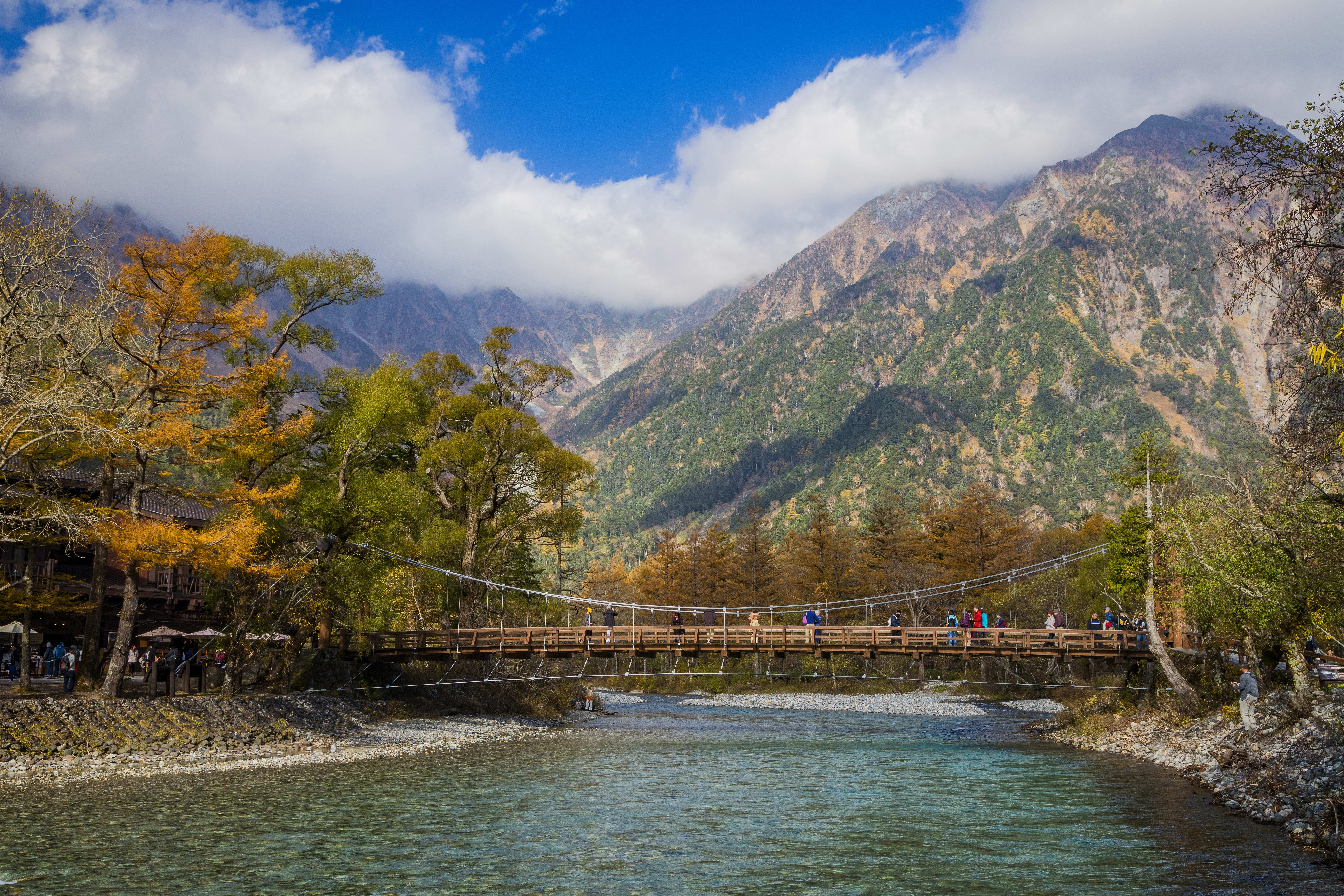
Canoeing on Lake Shikotsu
What is adventure tourism?
Adventure tourism encompasses a broad range of activities that focus on connecting with local culture and exploring nature to the fullest. These activities often encourage self-transformation through tough physical challenges and stepping out of one's comfort zone while promoting wellness. Adventure tour operators are also required to ensure the safety of participants and minimize environmental impact. Activities that involve some risk, like white water rafting, rock climbing, paragliding, and backcountry skiing or snowboarding, are considered "hard adventure" activities. Activities do not have to be physically demanding, though; in addition to cycling and hiking trips, adventure tourists can enjoy "soft adventure" through forest bathing, birdwatching, or snorkeling.

Views from above in Ashizuri-Uwakai National Park
Adventure Tourism in Japan's National Parks
The diverse landscapes in Japan’s national parks offer countless opportunities for adventure tourism, and participants can choose how much they want to be challenged. Activities like hiking and cycling can be enjoyed in almost every national park, with trails and routes of varying difficulty. National parks such as Towada-Hachimantai in Tohoku, or Joshin'etsukogen in Chubu, are particularly popular for skiing. Okinawa’s Keramashoto National Park is famous for its striking blue waters full of colorful coral reefs and attracts snorkelers and divers year-round. Shikotsu-Toya National Park offers visitors the chance to explore the beauty of Hokkaido at a more relaxed pace through walks, kayaking, or canoeing on its two eponymous lakes. Consider traveling with a guide or joining a tour to fully experience the adventures in the parks and for deeper insights into the diverse ecology you may encounter.
Hokkaido

Enjoy a relaxed adventure with stand-up paddleboarding
The vast wilderness of Japan's northernmost island offers visitors endless adventures, from nature-based tours and physically challenging treks, to leisurly lakeside strolls. Trek to Ansei Crater in the Tokachi Mountains of Daisetsuzan National Park, Japan’s largest land-based national park, to discover an ancient caldera, which is covered with snow in winter and alpine flowers in summer. After your hike, unwind with a therapeutic bath in its open-air hot springs. At the park's Sounkyo Gorge, experience the thrill of white water rafting amid towering rock cliffs. For a more relaxed adventure, take a leisurely stroll through the moss-carpeted forests surrounding Lake Shikaribetsu and Lake Komadome, spotting wildlife along the way, or enjoy canoeing and kayaking on their tranquil waters.
At Shikotsu-Toya National Park, south of Sapporo, hike beneath towering evergreens on Nakajima Island in the center of Lake Toya or admire the caldera lake from a kayak or canoe. Lake Shikotsu, east of Lake Toya, offers a wide variety of activities. From August to October, see schools of silver salmon while scuba diving in the transparent waters of Lake Shikotsu. In the winter, plunge into its icy depths in a wetsuit, or embark on a tour on a fat bike—fitted with specialized tires for riding in the snow—to enchanting Nanajo Falls, whose cascades freeze into a shimmering curtain of icicles.
Akan-Mashu National Park offers visitors the chance to explore the wild, sacred land of the Ainu and get in touch with their unique culture with programs led by Ainu guides. Discover the park's caldera lakes, volcanic landscapes and ancient forests through outdoor activities like trekking, cycling, and canoeing and many more.

Floating on drift ice in Shiretoko National Park
See Steller’s sea eagles and white-tailed sea eagles, as well as Ezo deer, as you hike or snowshoe through the forests and grasslands of Shiretoko National Park. Take a winter cruise through the drift ice on the western coast of the Shiretoko Peninsula and see spotted seals sunbathing on ice floes, or even brown bears walking along the shore.
Honshu
Towada-Hachimantai National Park in Tohoku has plenty to offer in all seasons. In autumn, cycle along gently sloping plains and through broadleaf woodlands, admiring the colorful foliage dappled with sunlight. Experience the deep, quiet beauty of winter as you snowshoe through Oirase Gorge, where distant, snow-covered trees resemble the dark brushstrokes of a Japanese ink painting. Snowshoe to Nanataki Falls at Mount Iwate to see it suspended in blue ice, or ski through forests of snow-laden firs in the Hakkoda Mountains, where skiing is possible under spring skies until the beginning of May.

Snowshoeing in Joshin'etsukogen National Park
In Joshin'etsukogen National Park in Chubu, ski or snowboard at one of the 19 ski resorts spread across the mountains of Shiga Kogen, the largest ski area in Japan. Enjoy slopes suitable for all levels at Kurohime Kogen Snow Park in Myoko-Togakushi renzan National Park, where you can also go snowmobiling, or tube down powder-packed hills.

A fat bike tour on the sand dunes of Tottori in San'inkaigan National Park
Cycle through the foothills of Mount Fuji on a full-day ecotour in Fuji-Hakone-Izu National Park. See pheasants, herons, and cormorants, as well as green tree frogs in spring and summer—and with a bit of luck—the elusive Japanese serow. Take a fat-bike tour of the Tottori Sand Dunes in San’inkaigan National Park, or even try sandboarding or paragliding, all while enjoying expansive views the sand dunes against the backdrop of the Sea of Japan.
Visitors to Nikko National Park can encounter World Heritage temples and shrines that blend in serenely with the surrounding landscape. The park also offers adventures like packrafting on Lake Chuzenji in the shadow of Mount Nantai, or climbing the rugged peak of Mount Asahi at Nasu followed by a soak in one of the area’s Edo-period (1603–1867) hot springs. For the adventure of a lifetime, embark on a 12-day, 900-kilometer-long guided cycling journey from Nasu through Nikko, Bandai-Asahi, and Towada-Hachimantai national parks.

Views of the Northern Japanese Alps in Chubusangaku National Park
Whitewater torrents and placid streams flow through the mountainous interior of Honshu. Beat the summer heat while shower climbing through clear, snowmelt-fed streams at Norikura Kogen in Chubusangaku National Park. Or go on an exhilarating log-rafting ride as you navigate rapids on the Kitayama River in Yoshino-Kumano National Park.
Visit the remote Oki Islands of Daisen-Oki National Park and hike through primeval forests of old-growth cedars. Admire the rugged beauty of the coastline from above and below as you stroll along the red volcanic cliffs of Sekiheki, or paddle between dramatic rock formations on the Akiya Coast by sea kayak.
Shikoku

Views of the Seto Inland Sea in Setonaikai National Park
Cycle along the Shimanami Kaido, a long-distance cycling route in Setonaikai National Park that spans six small islands and connects Shikoku to Honshu, yielding spectacular views of the Seto Inland Sea. Visit the charming fishing village of Tomonoura on the Honshu side, and then hike along the trails of Sensui, an island of faults and dikes carved by millions of years of volcanic activity.
Explore vast coral reefs hosting schools of tropical fish in the depths of Tatsukushi Marine Park in Ashizuri-Uwakai National Park, all from the comfort of a glass-bottom boat. Or dive in the sunlit shallows of Ryugahama Beach on Kashiwajima Island to spot striped butterfly fish and damselfish as they dart between colorful sea anemones. For exhilarating thrills, try canyoning and stream climbing at Ashizuri-Uwakai’s Nametoko Gorge. Safely scale smooth rocks under the guidance of an expert as you gaze upon a valley of moss-covered boulders smoothed by the Meguro River.
Kyushu
Stroll along the wooden boardwalks of Aso-Kuju National Park’s Tadewara Marsh in April, where bright yellow violas bloom in contrast to soil blackened from controlled burns. See blue globe thistles bob in the breeze above the marsh’s tall grasses in August and September. Enjoy the rare experience of kayaking through the still waters of rice fields in May and August against the backdrop of the Five Mountains of Aso. With a little hiking experience under your belt, climb to the summit of Mount Eboshi for magnificent views of the active Nakadake Crater, where steam billows from the acidic green lake at its center.

Nakadake Crater in Aso-Kuju National Park
Hike to the summit of Mount Unzen at Unzen-Amakusa National Park in spring, when pink Kyushu azaleas and flowering Japanese dogwoods cover its slopes. Summer is perfect for birdwatching on the mountain, as the birdsong of Narcissus flycatchers and cuckoos fills the air. Visit the Unzen Jigoku hot spring fields at the foot of the mountain, where sulfuric steam rises from bubbling vents of acid, or soak in a bath of mixed groundwater and seawater to soothe aching muscles at Obama Onsen hot springs.
Visit the Amakusa Archipelago and go fossil hunting on Goshoura Island, where budding paleontologists can find traces of ancient marine clams and ammonites, or perhaps even dinosaur bones. Head to Shimoshima Island to see migratory hooded cranes and white-necked cranes, or hike to the top of Mount Takabuto on Kamishima Island for panoramic ocean views. Go wakeboarding, or enjoy snorkeling and diving amid the archipelago’s abundant coral reefs.
Okinawa

Diving with sea turtles in Keramashoto National Park
The Kerama Islands in Okinawa’s Keramashoto National Park are a haven for diving and snorkeling enthusiasts of all levels. See shimmering schools of tropical fish and green sea turtles on a diving or snorkeling adventure. Go on a whale-watching excursion from December to April and watch humpbacks breach the waves during mating season, or try stand-up paddleboarding beneath an Okinawan sunset.
Choose your own adventure in Japan's national parks, from Japan’s northern reaches to its subtropical isles. Whether you’re seeking adrenaline-pumping thrills or prefer a leisurely outdoor tour, there are adventures to suit everyone’s comfort level.
Written by John Frustaglio




























